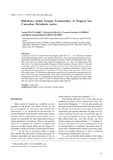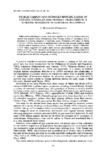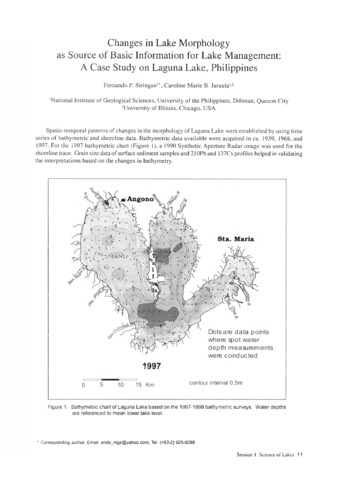Determination of poly‐β‐hydroxybutyrate assimilation by postlarval whiteleg shrimp, Litopenaeus vannamei using stable 13C isotope tracing
- Global styles
- MLA
- Vancouver
- Elsevier - Harvard
- APA
- Help

View/
Date
2021-02Author
Page views
2,412ASFA keyword
AGROVOC keyword
Taxonomic term
Metadata
Show full item record
Share
Abstract
A preliminary study was conducted to demonstrate fate of the bacterial storage compound poly-β-hydroxybutyrate (PHB) once ingested and degraded in vivo in crustaceans. The 2% supplementation of 13C-labeled Ralstonia eutropha DSM545 containing 75% PHB on dry weight in postlarval whiteleg shrimp, Litopenaeus vannamei resulted in consistent enrichment of two fatty acids (containing 14–24 carbons [C] in length) pentadecanoic acid (15:0) and palmitic acid (16:0) in all lipid fractions. This could indicate that 13C signal may not only originate from the PHB but partly from the structural components of the bacterial cell. There was a trend of lower 13C enrichment in various lipid fractions of the postlarvae as compared to the diet. These findings may have important implications as to potential of PHB as energy source rather than as building block. There was a rapid transfer of 13C in the postlarvae as seen by the significant 13C enrichment in the tissues 4 hr after feeding with labeled bacterial cells. Overall, the assimilation of PHB in crustacean tissues is demonstrated for the first time. Our results indicate that PHB once ingested is rapidly assimilated in the tissues and could probably act as an energy source rather than as a building block.
Keywords
assimilation fatty acids poly-β-hydroxybutyrate (PHB) stable carbon isotope whiteleg shrimpSuggested Citation
Ludevese-Pascual, G., Ahmed, F., De Troch, M., Amar, E., Laranja, J. L., Bode, S., Boeckx, P., Bossier, P., & De Schryver, P. (2021). Determination of poly‐β‐hydroxybutyrate assimilation by postlarval whiteleg shrimp, Litopenaeus vannamei using stable 13C isotope tracing. Journal of the World Aquaculture Society , 52(1), 184-194. https://doi.org/10.1111/jwas.12700
Type
ArticleISSN
0893-8849; 1749-7345Collections
- Journal Articles [1258]
Related items
Showing items related by title, author, creator and subject.
-
Diet-tissue stable isotopic fractionation of tropical sea cucumber, Holothuria scabra
Watanabe, Satoshi; Kodama, Masashi; Sumbing, Joemel Gentelizo; Lebata-Ramos, Maria Junemie Hazel (Japan International Research Center for Agricultural Sciences (JIRCAS), 2013)
To provide a basis for a stable carbon and nitrogen isotope ratio \(\mathsf{(\delta^{13}C / \delta^{15}N)}\) analysis to determine the assimilated organic matter in sea cucumber, Holothuria scabra, diet-tissue fractionations ...
(Japan International Research Center for Agricultural Sciences (JIRCAS), 2013)
To provide a basis for a stable carbon and nitrogen isotope ratio \(\mathsf{(\delta^{13}C / \delta^{15}N)}\) analysis to determine the assimilated organic matter in sea cucumber, Holothuria scabra, diet-tissue fractionations ... -
Stable carbon and nitrogen isotope ratios of penaeid juveniles and primary producers in a riverine mangrove in Guimaras, Philippines
Primavera, Jurgenne (University of Miami, Rosenstiel School of Marine and Atmospheric Science, 1996)
Stable carbon and nitrogen isotope ratios were analyzed for primary producers and juveniles of four penaeid species (Metapenaeus ensis, Penaeus indicus, P. merquiensi and P. monodon) in a riverine mangrove in Guimaras, ...
(University of Miami, Rosenstiel School of Marine and Atmospheric Science, 1996)
Stable carbon and nitrogen isotope ratios were analyzed for primary producers and juveniles of four penaeid species (Metapenaeus ensis, Penaeus indicus, P. merquiensi and P. monodon) in a riverine mangrove in Guimaras, ... -
Changes in lake morphology as source of basic information for lake management: A case study on Laguna Lake, Philippines
Siringan, Fernando P.; Jaraula, Caroline Marie B. (Southeast Asian Regional Center for Graduate Study and Research in Agriculture (SEARCA), 2005)





